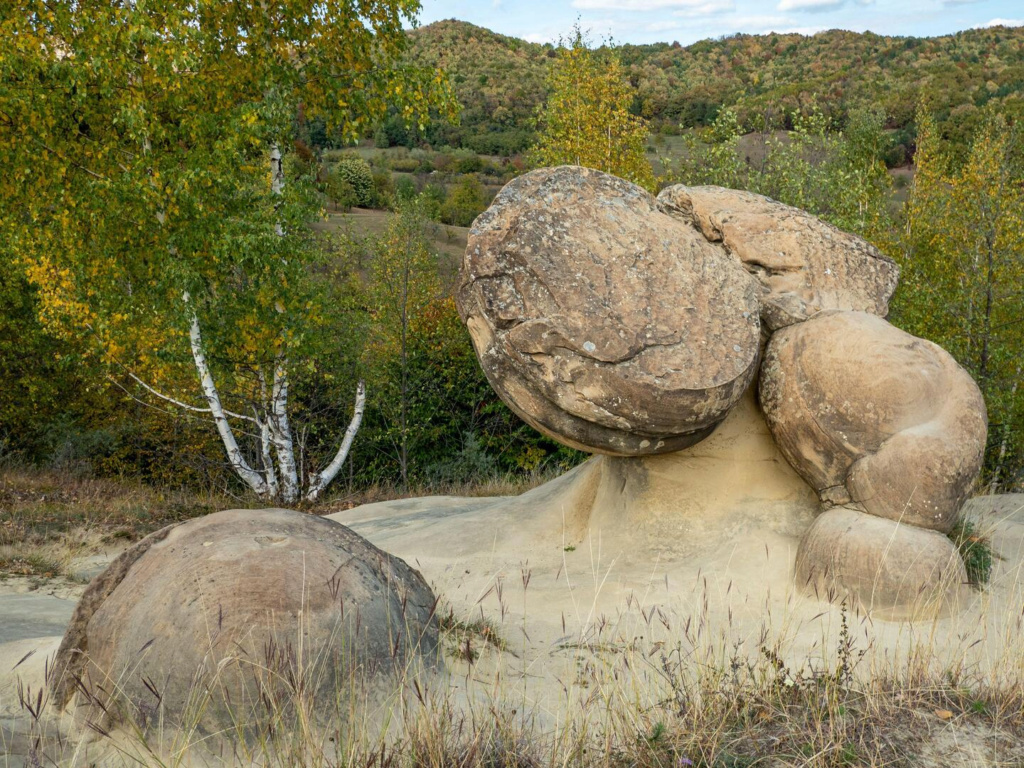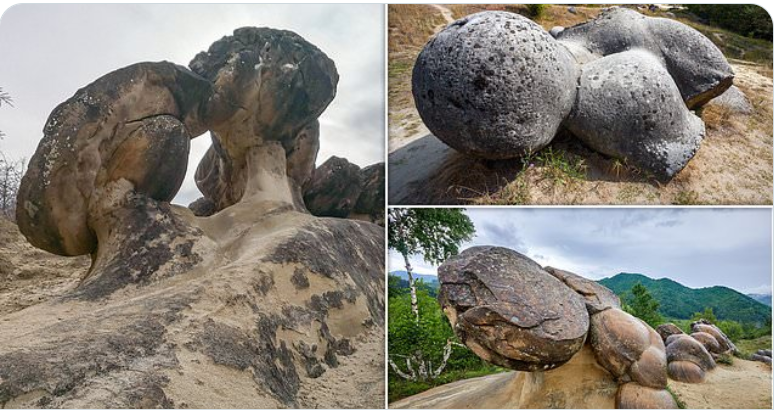“Living Rocks” .. Revealing The Secrets Of Mysterious Stones Capable Of Growth And Movement In Romania

A small town in Romania called Costeste has been marked as home to an unusual geological phenomenon known as “Trovantes”.
The “Trovantes” vary greatly in size and shape, some of which can fit comfortably in the palm of the hand, while others may reach a height of 4.5 meters.
Starting with pebbles that grow by about 5cm every thousand years, the floating stones are unique mineral structures that mimic plant and mammal life.
These strange "living" stones seem to grow in the same way as plant tissue and generate new stones just like an animal.
The Trovantes do not simply appear from the ground, but are found in a mass of sand from different geological ages that reach natural outcrops or in sand quarries.
It is noteworthy that the term "Trovants" is synonymous with the German term "Sandsteinkonkretionen", which means "sandy knot or tubercle".
Dr Mircea Tequilianu, from the Geological Institute of Romania, said the word “trovant” was used for the first time in geological literature from Romania.
Visitors to Costesti can walk on a large variety of spherical stones, which grow slowly over time in the presence of rainwater. It consists mainly of a solid stony core surrounded by sands that form its crust.
The minerals in rainwater form an internal interaction that leads to an increase in pressure inside, which causes rocks to grow and multiply.
In a clearer sense, “Trovantes” is a type of concrete or hardened stone, granular or sedimentary sandy rock bound together by cement of limestone (calcium carbonate).
Scientists did not find any difference between "Trovantes" and the surrounding sandy base, so they suspect that the spherical shapes were formed through unusually intense and prolonged seismic activity in the middle Miocene, 6 million years ago. And that the shock waves emanating from the ground compressed the sandy sediment and concentrated the lime cement to form its spherical masses.
Over time, the elements eroded the sandstone around it, exposing the denser rock.
When exposed to heavy rains, some cement can seep into its surface, which is gradually added to the outer perimeter of the stone over time.
Not much has been written about this process, but it is said to only occur in about 4-5 cm over a period of 1200 years.
When cutting the stone, bumps and rings can be observed, much like the rings that form the circumference of trees, each of which represents a specific period of growth.
Although they are not alive in the scientific sense, locals and tourists alike have described them as "living" stones because of the way they seem to change over time, as well as their ability to move from one place to another, which is likely to happen. Due to the increase in the mass of the stone on one side, this leads to its tilting forward.
Costesti isn't the only place where Trovantes stones are found, but rather they're all over Romania's Carpathians, according to a study co-authored by Dr. Teclinu.

However, those of Costesti are well known and have large diameters. They are spherical and elliptical, but many have double, complex shapes.
Source : websites

